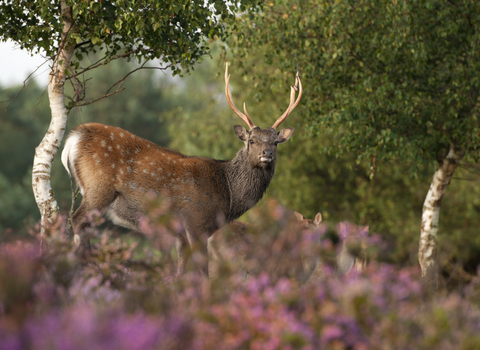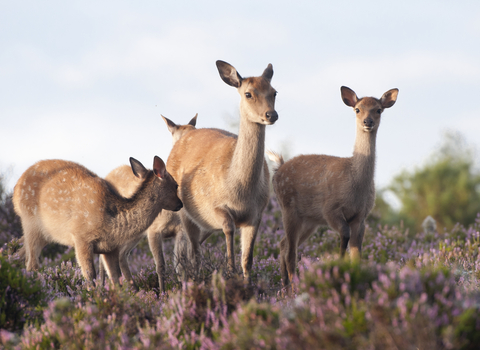
Sika deer stag © Ross Hoddinott/2020VISION

Sika deer © Ross Hoddinott/2020VISION
Sika deer
Sika deer were introduced to the UK in the 19th century. They are native to eastern Asia.
Scientific name
Cervus nipponWhen to see
All yearSpecies information
Category
Statistics
Height: up to 0.95 metres at the shoulderWeight: up to 70 kg
Habitats
About
Sika deer are native to eastern Asia. They were brought to the UK to populate deer parks in the 19th century. Some escaped or were released and became established in the wild. They are usually found in conifer woods and on heaths on acid soils, but can live in a wide variety of habitats.Their breeding season, known as the rut, is between September and November. Males (stags) usually defend a rutting territory, but will switch to defending a group of females (hinds) once they have gathered. Sika deer have a wide range of calls, including whistles and wails.
Sika deer can hybridise with red deer and the hybrids can be difficult to identify. In some areas, hybridisation is so common that it raises concerns for the populations of red deer.
